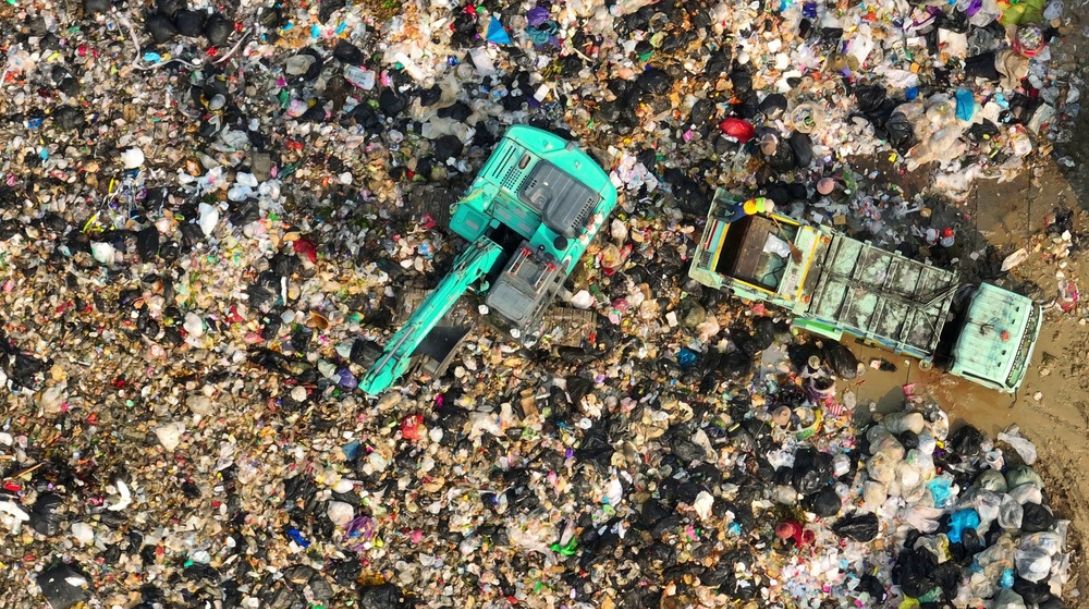Proper storage and handling of hazardous waste plays a critical role in safety and continued compliance with state and federal regulations. When handling hazardous materials, you should ensure that your entire team understands and follows the latest best practices and protocols to mitigate the risk of an incident.
The following guide will shed light on some best practices for waste management. You’ll be able to see just how your current approach to handling hazardous materials stacks up and make changes wherever necessary.
Table of Contents
Understanding Hazardous Waste and Its Dangers
Hazardous waste refers to any material that poses a significant risk to one’s health, safety, or the environment when not managed properly. Common examples include the following:
- Solvents
- Heavy metals
- Radioactive materials
- Flammable substances
These materials can be found in industries ranging from manufacturing to healthcare. It’s how you go about interacting with, storing, and disposing of these materials that will have a direct impact on your company’s reputation and employee well-being.
The bottom line is that industrial waste management is serious business. If you get it wrong, consequences could include fines, reputational damage, injury or death to employees, and long-lasting environmental contamination.
For example, chemical reactions due to improper containment can cause fire or even explosions. Any hazardous materials leaking into the soil or water supply could cause severe contamination and harm to local ecosystems. Your business will be responsible for remediation, which could take months and cost tens of thousands of dollars.
All of the above details are to say that you cannot afford to take a lax stance on hazardous waste handling. You and your entire team should adhere to established best practices for waste management; the future of your business depends on it.
Regulatory Requirements for Hazardous Waste Storage
Both federal and state regulations are in place to protect people and the environment alike from the dangers associated with hazardous waste. Compliance with these provisions is non-negotiable.
The Environmental Protection Agency (EPA) enforces federal regulations governing the use, storage, treatment, and disposal of all hazardous materials. It is also responsible for defining and regulating hazardous waste management facilities and imposing enforcement actions for those who violate federal law.
Alongside the EPA, you must also identify the state agency in your jurisdiction that handles environmental contamination issues. Each state is likely to have its own specific rules governing hazardous waste storage and disposal.
Nevertheless, here are a few common requirements that apply to every jurisdiction:
- Proper identification and labeling of hazardous waste containers
- Appropriate containment measures to prevent leaks or spills
- Storage time limits
- Detailed record-keeping for tracking hazardous waste from generation to disposal
You may also face local restrictions, including zoning laws, that outline how you must address hazardous materials.
5 Best Practices for Waste Management
Here are the five most essential practices for safe and effective waste management:
1. Proper Labeling and Identification
One of the first steps in managing hazardous waste involves ensuring that you label all of your containers. Proper labeling helps employees, emergency responders, and waste management companies quickly identify the contents and any associated hazards.
The EPA requires waste generators to identify and label their products or byproducts. The labels must adhere to standardization rules and include the following information:
- The type of waste
- Symbols or descriptions of the specific dangers, such as flammability or toxicity
- The date the waste was stored
You must ensure that your team members have each received proper training on labeling and identification. They should know how to interpret standardized labels or, at the very least, where to find information about each product.
Additionally, your workers should have up-to-date training on the Occupational Safety and Health Administration’s (OSHA’s) Hazard Communication Standard (HCS). They should also know how to locate and use Safety Data Sheets (SDSs) to learn more about the hazards associated with each chemical or material your business uses, produces, or stores.
2. Containment Methods
Proper containment is one of the most critical components of hazardous waste management. The types of containers you will use will depend on the type and quantity of waste your facility stores. Common options include drums, tanks, and specialized hazardous waste containers designed to hold specific materials. Choose the right container for your intended use case, ensuring that the storage device’s material won’t react with hazardous substances.
You or a team member must regularly inspect containers for any warning signs of a potential leak as well. Common examples include cracks, corrosion, or other such damage. Your business should implement secondary containment systems, such as spill trays or barriers, to prevent leaks from spreading.
Every hazardous material handler also needs to know how to deploy containment methods in the event of a spill or leak. The sooner you can identify and contain a leak, the lower the risk of fines or severe environmental damage.
Don’t simply put policies in place, though. Run drills and training scenarios with your team to ensure that they know how to implement containment strategies under pressure. Ensure everyone knows their role and can reliably execute it.
3. Storage Location and Facility Requirements
The adequate storage of hazardous materials represents one of the most important components of the waste management process. You must choose the right storage location for hazardous waste to ensure the safety of your team and the environment.
Waste must be stored in areas that are designed to reduce risks, such as fires, explosions, and exposure to nearby sensitive locations like waterways or residential areas.
With regard to that last point, make sure to measure the distance between your intended storage area and potentially sensitive areas before setting things in stone. You’ll undoubtedly want to keep hazardous items away from office spaces and break rooms, and you should also position storage containers far away from any area where food may be prepared or consumed.
You may have to store hazardous waste inside, and in these instances, you must be mindful of the buildup of dangerous gasses. You can mitigate such a threat with a robust ventilation system.
Lastly, your business will also be responsible for installing fire safety measures in and around the storage area. Review local and state fire codes to determine the specifics, including what type of fire extinguishers you are required to have and how many you need on-site. Fire code violations can result in fines or even prompt city officials to close your facility.
4. Training and Emergency Preparedness
Proper training is the cornerstone of any effective waste management program. Employees who are responsible for handling hazardous waste need to be taught about the specific risks associated with those kinds of materials. Teach them proper storage and emergency precludes as well.
You’ll also want to develop a detailed emergency response plan that covers everything from how to deal with spills to who you will notify in the event of a fire. Make sure that your team members know the plan inside and out. They won’t have time to consult the rulebook in the event that you all face a real hazardous waste emergency.
Audits represent another critical component of preparedness. Conducting regular reviews of your policies and procedures will help you determine what you are doing well and how you can improve. Consider bringing in a third-party team to conduct these audits, as they will be able to provide an objective look at your overall preparedness.
Most importantly, ensure that you’ve partnered with a response services provider. You need to have a 24-hour emergency spill response partner ready to tackle the unexpected. They will respond to your facility in the event of a leak or spill and address immediate containment issues, thereby shielding your business from additional liability while also protecting the local ecosystem.
5. Disposal and Proper Handling
Lastly, you need a safe means of disposing of waste. All hazardous waste must be handled by an authorized disposal facility. And there are strict time limits for just how long you can store that waste before disposing of it.
Federal and state regulations establish these storage limits. The specific time frames will vary depending on where your business is located and what material you are dealing with.
There are also rules governing how to transport hazardous waste. Find out what containers you have to use and how you must document the shipping process. If you aren’t handling the process in-house, make sure you are using a licensed transportation service that is authorized to move hazardous materials.
Best Practices Checklist for Hazardous Waste Storage
Here’s a handy checklist to help you evaluate your current policies and procedures to ensure that you safely (and legally) store and manage hazardous waste:
- Correctly identify and classify all materials
- Use approved containers that meet state and federal guidelines
- Keep storage areas locked and restrict access
- Ensure storage areas have proper ventilation
- Make sure your team members wear the proper protective equipment
- Keep comprehensive records of all waste generation, storage, and disposal
- Don’t keep any materials past their storage limits
- Regularly update your employees on emergency procedures
If you find that there are any gaps in your current waste management practices, fix them before they lead to regulatory penalties or, worse, a major spill.
How to Find a Reliable Hazardous Waste Management Company
Choosing the right company to partner with is the key to effective hazardous waste management. Alpha-Omega Training and Compliance (A-OTC) offers solutions designed to mitigate your liability and give you peace of mind. Contact us today to learn more about our comprehensive hazardous waste management services.


